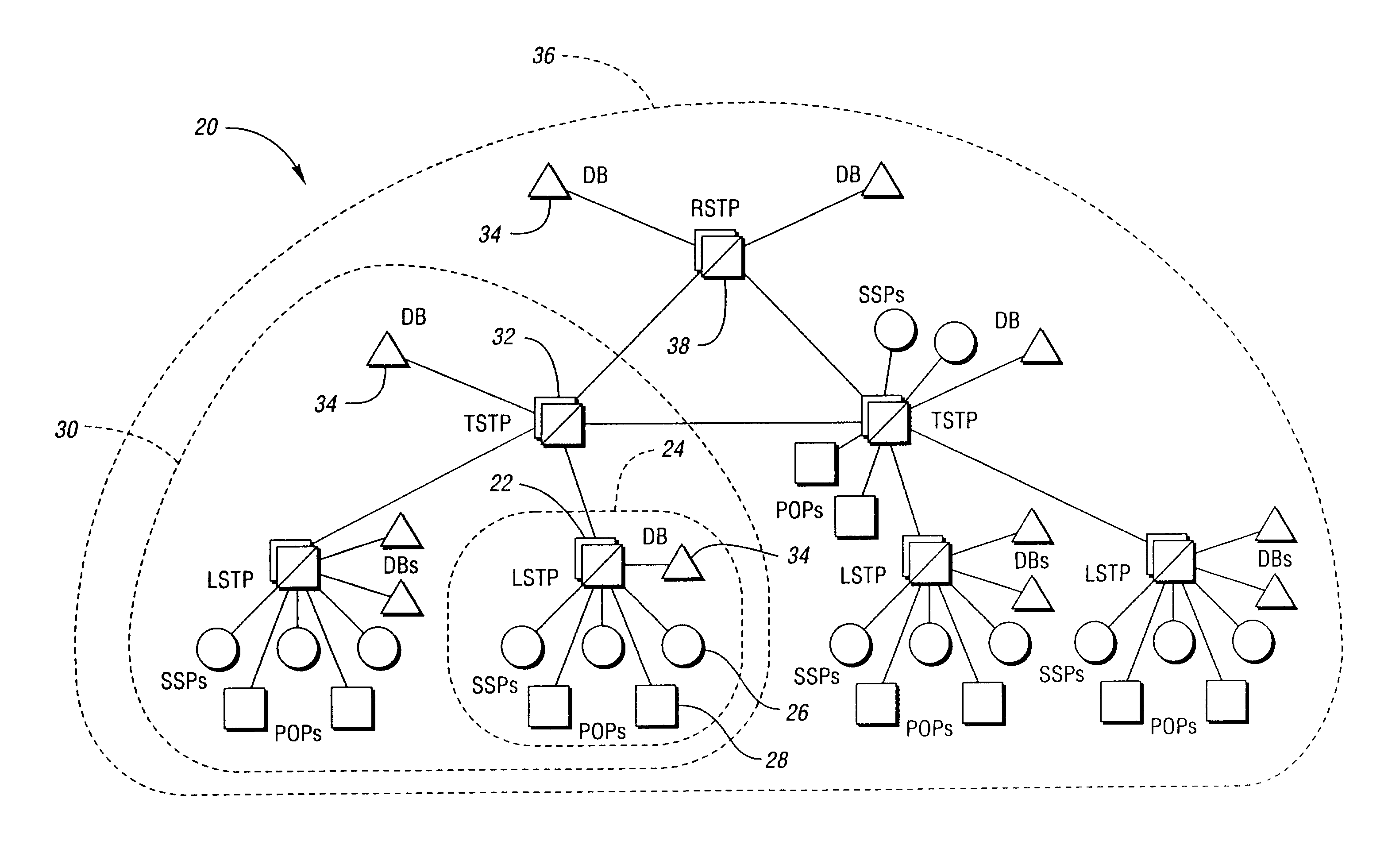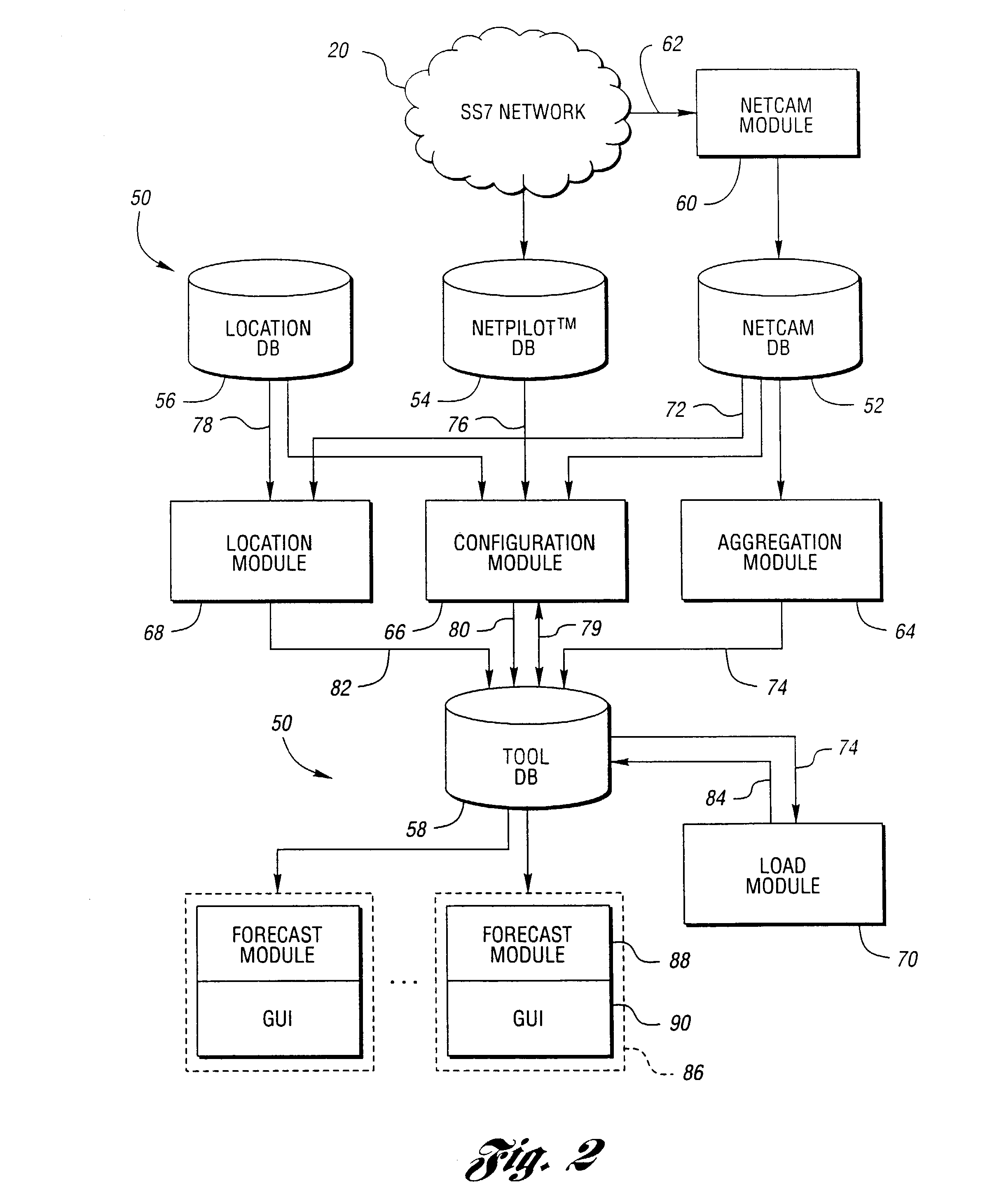SS7 network planning tool
- Summary
- Abstract
- Description
- Claims
- Application Information
AI Technical Summary
Benefits of technology
Problems solved by technology
Method used
Image
Examples
Embodiment Construction
[0024]Referring now to FIG. 1, an SS7 network architecture is shown. An SS7 network, shown generally by 20, is comprised of STPs interconnected by links to form a core network. Several different switch models may be used as STPs. Each model has different capacity and engineering parameters. Network 20 shown in FIG. 1 has STPs arranged in three tiers, but the present invention applies to any SS7 network configuration.
[0025]Local STP (LSTP) 22 serves a LATA, shown generally by 24. Every SSP 26 in LATA 24 is connected either directly or indirectly to LSTP 22. Connections between SSPs have been omitted for clarity.
[0026]Each LSTP 22 handles inter-LATA traffic to and from the IXCs via POPs, one of which is indicated by 28, attached to each LSTP 22. POPs 28 provide long distance services to regional Bell operating companies (RBOCs), which would otherwise be prohibited from transporting calls across the boundaries of LATA 24. POP services include AT&T®, MCI®, Sprint®, and the like. Each SS...
PUM
 Login to View More
Login to View More Abstract
Description
Claims
Application Information
 Login to View More
Login to View More - R&D
- Intellectual Property
- Life Sciences
- Materials
- Tech Scout
- Unparalleled Data Quality
- Higher Quality Content
- 60% Fewer Hallucinations
Browse by: Latest US Patents, China's latest patents, Technical Efficacy Thesaurus, Application Domain, Technology Topic, Popular Technical Reports.
© 2025 PatSnap. All rights reserved.Legal|Privacy policy|Modern Slavery Act Transparency Statement|Sitemap|About US| Contact US: help@patsnap.com



